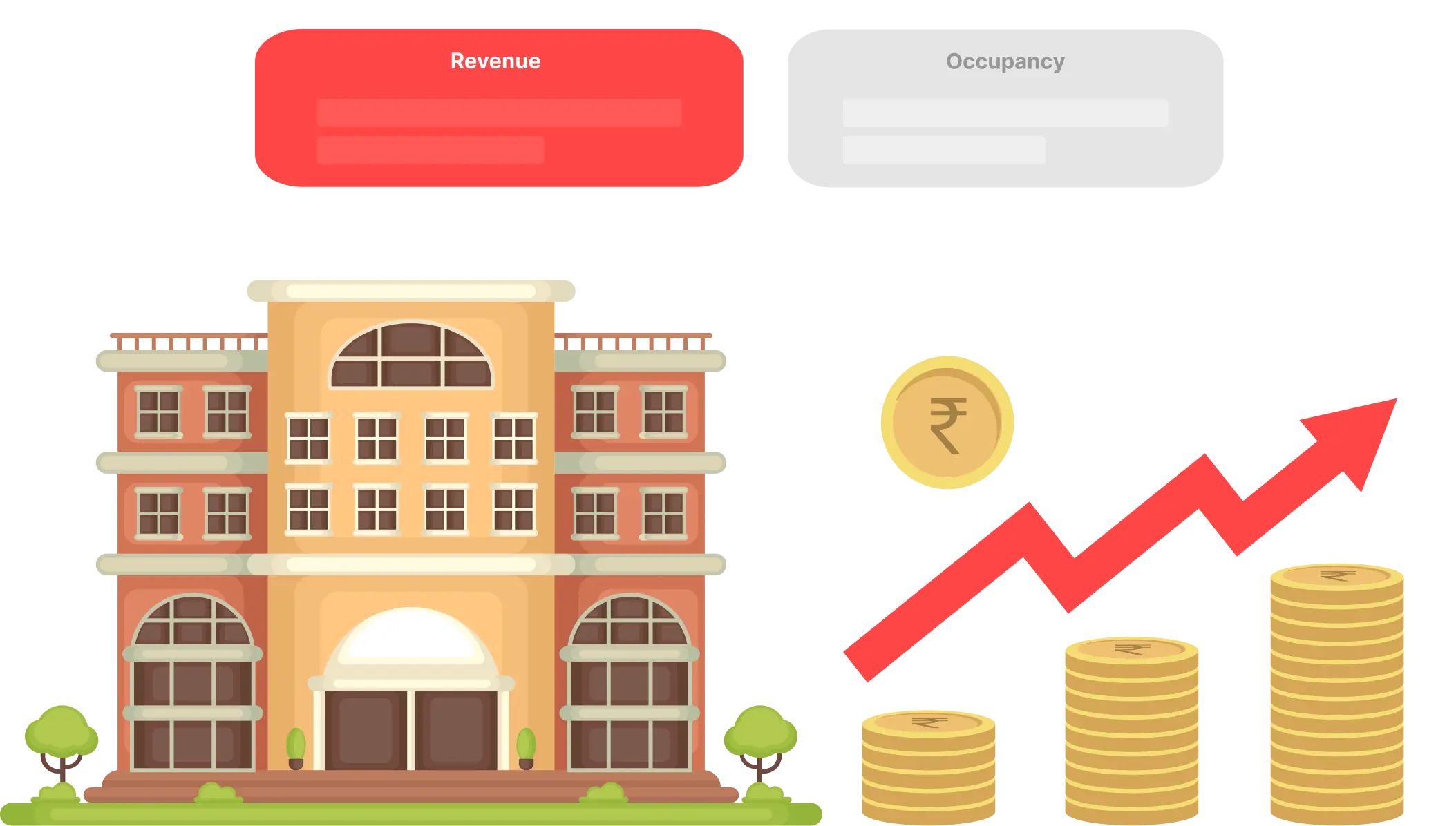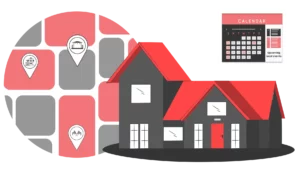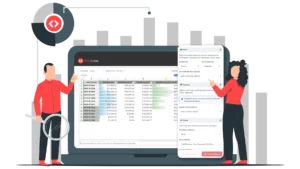Updated: October 30, 2024
Your customers (short-term rental owners) are in the business of making money. Your priority is to ensure that they make the most of their business. Sometimes, managing owner expectations is difficult. They might be realistic or have become unrealistic due to seasonality. Every single unsatisfied owner is a dent in your property management business. Let’s be honest: acquiring a new owner is much more expensive than maintaining an existing one. When owners understand revenue and occupancy and other related vacation rental KPIs, they will be able to appreciate the value you bring them and their business.
About 10 million people own at least one vacation rental property, and about 51% choose to work with property managers. The property management industry generates $99.5 billion annually.
What is Revenue?
You should start with revenue to understand revenue and occupancy. Revenue is the sum of the rental amounts of all the bookings in the property you manage.
Revenue = (Booking 1) + (Booking 2) + (Booking 3) + ………..
There are multiple vacation rental KPIs to consider when looking at revenue, such as:
- Revenue Per Available Room (RevPAR)
- Total Revenue Per Available Room (TRevPAR)
- Adjusted Revenue per Available Rental (ARPAR)
- Gross Operating Profit per Available Rental (GOPPAR)
All of these can be complicated for short-term rental owners. You must sit with the owner, explain these metrics, and help them choose the right one to understand revenue and occupancy for their property and business.
What is Occupancy?
Occupancy rate is the percentage of the total number of nights rented over a specified period. Monthly or annual can be added before the occupancy rate to denote the duration over which it is calculated.
On any given day, the occupancy rate for your vacation rental or single-family home can either be 0% (booked) or 100% (available).
The host can block a vacation rental for personal reasons or maintenance purposes. Some people like to remove blocked days when calculating the occupancy rate, as both booked and available days count.


How Should The Occupancy Rate Be Analyzed?
- According to the market: If your occupancy rate is considerably higher than the market, there is scope to charge more. The vice versa is also applicable.
- According to your listing performance, If your ADR and occupancy rates are low, you can increase your prices again.
You should regularly analyze the properties’ occupancy and average daily rate to ensure you are on the right track to understand and optimize revenue and occupancy.
How To Make Owners Understand Revenue And Occupancy?
Making users understand revenue and occupancy is going to be difficult. This will be even more difficult if the owner is new to the industry. Here, we’ve tried to outline the steps you can take to ensure that the owners you manage can understand revenue and occupancy.
#1 Make Them Understand The Factors Influencing Revenue And Occupancy
Once you and the owners of the properties you manage understand the factors that influence revenue and occupancy in their market, they will be able to understand revenue and occupancy.
It is important that they appreciate the work you do for them; this way, even during the downtime, they would be able to understand and appreciate the effort.
Factors Influencing Revenue And Occupancy
Location Of The Property
- Proximity To Attractions: Properties near popular tourist attractions, landmarks, or event venues tend to attract more guests and command higher rates.
- Accessibility: Easy access to public transportation, airports, or major highways can increase the appeal of a rental property.
- Neighborhood Characteristics: Safe, vibrant neighborhoods with amenities like restaurants, shops, and parks can enhance a location’s desirability.
Seasonality
- Peak Seasons: Identifying peak seasons based on local events, holidays, or weather patterns can help optimize pricing and availability.
- Off-Peak Strategies: Implementing strategies like promotions, discounts, or targeting niche markets during off-peak seasons can help maintain revenue during slower periods.
Property Type and Amenities
- Property Size and Layout: The number of bedrooms, bathrooms, and overall space influence the type of guests a property can accommodate and the rates it can command.
- Amenities: Offering desirable amenities such as a fully equipped kitchen, laundry facilities, air conditioning, or entertainment options (e.g., streaming services and game consoles) can attract more guests and justify higher rates.
Marketing and Visibility
- Online Presence: Utilizing multiple online platforms (e.g., Airbnb, VRBO) to showcase the property with high-quality photos, detailed descriptions, and positive guest reviews.
- Social Media and Networking: Leveraging social media channels and building relationships with local businesses or tourism organizations to increase visibility and attract potential guests.
Regulations and Taxes
- Legal Compliance: Understanding and adhering to local regulations, zoning laws, and licensing requirements for short-term rentals to avoid fines or legal issues.
- Tax Implications: When calculating revenue and profitability, account for taxes such as occupancy taxes, sales taxes, or income taxes applicable to short-term rental income.
Property Management
- Responsive Communication: Promptly responding to inquiries, addressing guest concerns, and providing clear instructions for check-in/check-out enhance the guest experience and encourage positive reviews.
- Efficient Operations: Streamlining cleaning, maintenance, and guest services processes to ensure a seamless experience for guests and minimize downtime between bookings.
#2 Establish Trust And Build Rapport
Establishing trust and building rapport with property owners as a property manager is crucial for a successful and enduring partnership. Here’s a detailed approach with examples:
Initiate an Introductory Meeting
Start by scheduling a face-to-face or virtual meeting with the property owner. This meeting is an opportunity to introduce yourself, understand the owner’s goals and expectations, and establish a personal connection.
During this meeting:
- Be punctual and professional, respecting the owner’s time and investment.
- Listen actively to the owner’s concerns and objectives, showing genuine interest in their property.
Demonstrate Expertise and Industry Knowledge
Showcase your experience and expertise in property management to instill confidence in the owner.
Emphasize Transparency and Open Communication
Communicate your commitment to transparency and open communication from the outset. Assure the owner that you will keep them informed about all aspects of property management, including:
- Regular updates on property performance, financial statements, and maintenance activities.
- Prompt notification of any issues or concerns that may arise, along with proposed solutions.
- Accessibility and responsiveness to the owner’s inquiries and feedback.
Personalize the Relationship
Beyond discussing business matters, take the time to get to know the property owner personally. Show genuine interest in their background, interests, and long-term goals. Building a personal connection fosters trust and strengthens the professional relationship.
Example: “I noticed you’re a fan of golf. As it happens, there’s a new golf course opening nearby. Perhaps we could schedule a round together and discuss your property goals in a more relaxed setting.”
Follow Through on Commitments
Consistently deliver on your promises and commitments to reinforce trust and credibility. Whether adhering to agreed-upon timelines, implementing suggested improvements, or addressing concerns promptly, demonstrating reliability is key to building a strong foundation for the partnership.
#3 Customize Reporting, Benchmarking, And Updates According To Their Preference
Providing customized reporting, regular updates, and benchmarking to property owners demonstrates a property manager’s commitment to transparency, accountability, and proactive management. Here’s a detailed approach with examples:
Customized Reporting
- Gather Feedback: Initiate a dialogue with property owners to understand their preferences regarding reporting format, frequency, and the specific metrics they find most valuable.
- Develop Customizable Templates: Create reporting templates allowing property owners to track performance metrics according to their preferences. These templates should be flexible and user-friendly, accommodating various data visualization preferences.
- Incorporate Visual Aids: Enhance data visualization and comprehension by incorporating visual aids such as charts, graphs, and infographics into the reports. Visual representations can make complex data more accessible and facilitate quicker decision-making.
You can export PDFs of Portfolio Analytics and Market Dashboards in PriceLabs. You can also download the various metrics we show as CSV. This way, you can customize how you show that data to your clients.


Regular Updates
- Schedule Check-Ins: Establish a regular cadence for check-in meetings with property owners to review performance metrics, discuss any concerns or opportunities, and provide updates on property management activities.
- Provide Detailed Explanations: When presenting performance metrics, explain any fluctuations or trends observed, supported by data-driven analysis. Transparency and clarity are essential for building trust and confidence.
Example: “During this quarter, we noticed a slight decrease in occupancy rates. However, upon analysis, we identified that this was due to seasonal fluctuations rather than underlying issues. We’re implementing targeted marketing strategies to address this and expect occupancy to rebound next quarter.”
With the multiple graphs we provide in our dashboards, you will also get unique AI insights to be driven from them. You can use these to explain those graphs and data points to your clients. The chart below shows the future prices graph in Neighborhood Data. This graph will show the future prices of your property compared with the market.
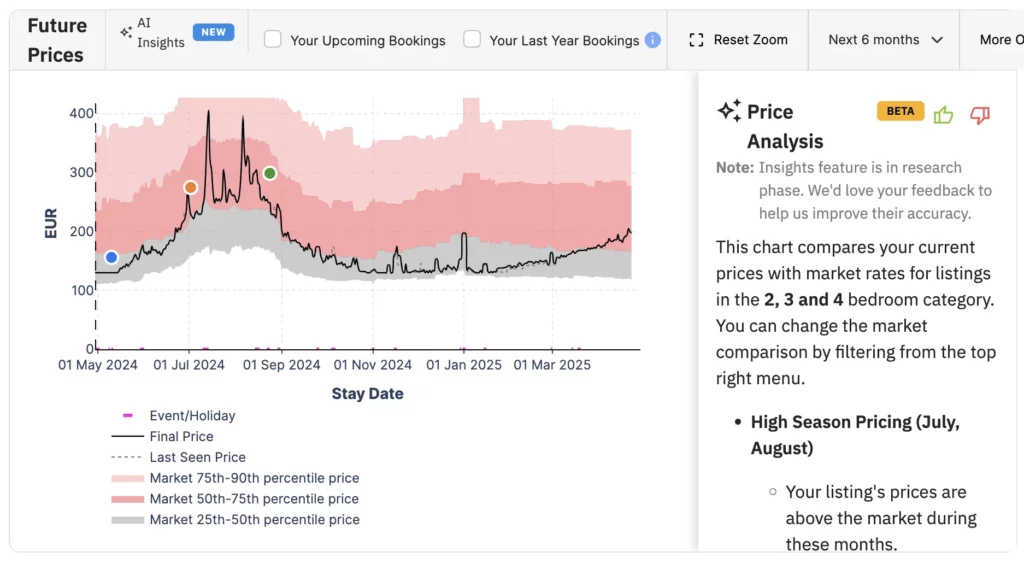

Encourage Active Participation
Property owners should actively participate in discussions about property performance, ask questions, and provide feedback. This collaborative approach fosters a sense of partnership and ensures owners feel engaged and informed.
Benchmarking
- Conduct Market Research: Conduct thorough market research to identify industry benchmarks and competitor performance metrics relevant to the property’s location, type, and market segment.
- Compare Performance: Compare the property’s performance against relevant benchmarks, highlighting areas of strength and identifying opportunities for improvement. Provide actionable insights and recommendations for optimizing performance.
- Recommend Strategies: Recommend specific strategies and initiatives based on benchmarking analysis to help the property maintain or surpass industry standards. These recommendations should be tailored to the property’s unique characteristics and the owner’s objectives.
You can use the Market Dashboard and Neighborhood Data to analyze the market. Market Dashboard is a fully automated, personalized dashboard designed to help you monitor average airbnb prices and airbnb occupancy rates by city. Its easy-to-digest graphs and insights make it an invaluable resource for understanding market trends and making informed pricing decisions.
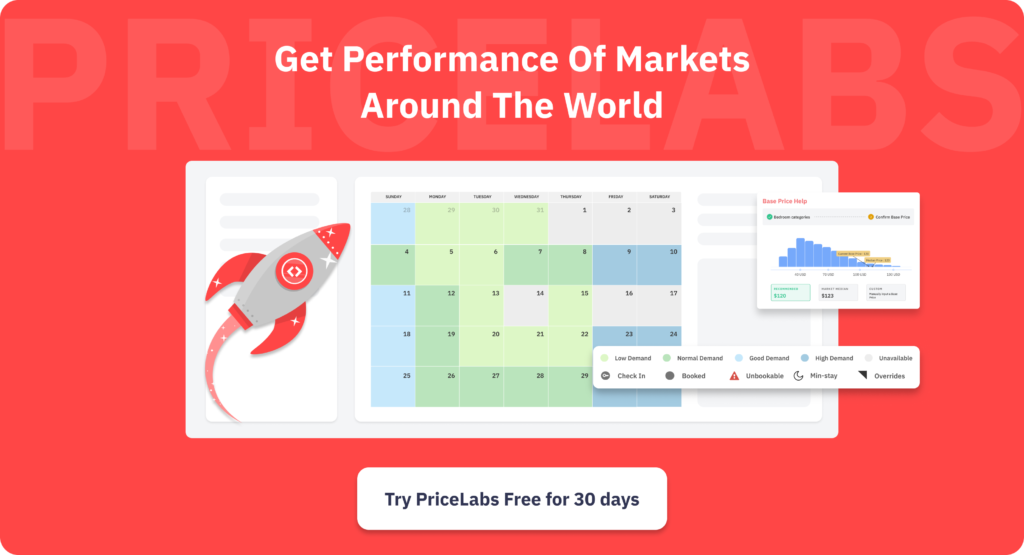

#4 Educate Them On Key Metrics And Provide Forecasts On The Market
Identify Key Metrics
Identify the key performance metrics relevant to the property. These may include occupancy rates, rental income, expenses, cash flow, maintenance costs, tenant satisfaction scores, and property value appreciation. Explain the significance of each metric in assessing the property’s financial health, operational efficiency, and overall success.
Provide Context and Explanation
Explain each key metric, including how it is calculated, why it is important, and what factors influence it. Provide real-world examples or case studies to illustrate the impact of these metrics on the property’s performance and profitability.
Provide Forecasts and Projections
Utilize advanced forecasting models and predictive analytics to project future revenue and occupancy levels—present multiple scenarios based on different market conditions and variables to help owners make informed decisions.
#5 Provide Performance Enhancement Strategies
Conduct Regular Property Audits
Schedule periodic property audits to assess various aspects of the property’s operations, maintenance, and management. Identify areas for improvement and optimization, such as maintenance needs, cost-saving opportunities, and tenant amenities or service enhancements.
Develop Personalized Optimization Strategies
Tailor optimization strategies to each property’s specific characteristics, considering factors such as location, target market, property type, and competitive landscape. Analyze market dynamics and trends to identify opportunities for revenue growth, cost reduction, and operational efficiency improvements.
Implement A/B Testing
Use A/B testing methodologies to experiment with different pricing strategies, promotional campaigns, and listing optimizations to determine which approaches yield the best results. Monitor performance metrics closely and analyze the data to identify trends, patterns, and areas of improvement.
Optimize Marketing and Advertising Efforts
Review and refine marketing and advertising efforts to effectively reach target audiences and generate leads. Utilize digital marketing channels, social media platforms, and targeted advertising campaigns to increase property visibility and attract prospective tenants or buyers.
Enhance Tenant Experience and Satisfaction
Focus on enhancing the overall tenant experience to improve satisfaction, retention, and word-of-mouth referrals. Implement initiatives such as regular maintenance checks, responsive communication channels, and community-building events to foster a positive living or working environment.
If you want to learn more about our Market Dashboard and our Portfolio Analytics, you can take a look at our YouTube videos on these topics:
- Market Dashboard Training: Using Market Dashboard to gain competitive edge | PriceLabs
- Portfolio Analytics Training – How to spot actionable trends and insights | PriceLabs
Key Takeaways
- Revenue is the sum of all bookings that the property over a specified period of time.
- Occupancy rate is the percentage of the total number of nights rented over a specified period. Monthly or annual can be added before the occupancy rate to denote the duration over which it is calculated.
- You should employ the following methods to make owners understand revenue and occupancy:
- Make them understand the factors influencing revenue and occupancy
- Establish trust and build rapport
- Customize reporting, benchmarking, and updates according to their preference
- Educate them on key metrics and provide forecasts on the market
- Provide performance enhancement strategies
PriceLabs Market Dashboards and Portfolio Analytics help you benchmark against the market and track your portfolio’s performance. Monitoring the data is important to ensure you are on the right track.


